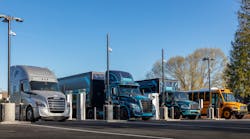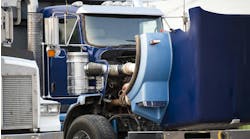I read with some interest the recent announcement that Lion Electric has launched LionCapital Solutions, which will give “flexible financing solutions specifically tailored to the medium- and heavy-duty electric vehicle market.”
Many new entrants into the electric vehicle market as well as incumbent OEMs with electric vehicle offerings are using financing to go to market so they can retrieve data on real-world performance.
Yet, electric vehicles in the trucking industry are still in the early stages of development. There are not significant numbers of commercial battery-electric vehicles in the field to get a handle on things like reliability, durability, maintenance costs, and residual value.
See also: California dreamin’ of transportation electrification
It can be hard to make a case for electric trucks’ total cost of ownership. They cost more upfront, and we have no idea what they will be worth when the first owner wants to trade them in. We can learn from the automotive industry, which has sold electric vehicles for long enough that they are showing up on the used market today. And they seem to be holding their value and bringing a decent residual value.
Trucking tends to follow automotive, so I am hopeful that as we start seeing the OEMs produce higher numbers of electric trucks that we will also see decent residual values—or at least we will get an idea of what they are worth used, which will help with financing options.
Where trucks are not like cars is in annual miles driven. Depending on duty cycle, trucks can go much farther than the typical automobile’s 12,000 miles a year. But here is an interesting statistic: Commercial vehicles’ length of haul and annual miles traveled are declining. The average annual miles driven is 90,000 to 100,000 for sleepers but 65,000 to 75,000 for day cabs—down from an average of 120,000 and 85,000 miles, respectively.
In their current state of development, battery-electric commercial vehicles are not ready to be used in long-haul operations. However, in local delivery and last-mile applications, they could be a good fit.
Electric vehicles are not the only option for fleets wanting to operate in a more sustainable manner. CNG- and propane-powered trucks make sense in some applications. Corcentric recently purchased and sold 100 used CNG trucks. A residual market is developing, and there is a demand for used alternative-fuel vehicles.
See also: Regional haul and electric trucks: A winning combination
Fleets need to find the right power source for each of their duty cycles—and that might mean operating trucks with different power sources. Finance companies must continue to work with fleets to make the numbers work even in the absence of historical resale values.
The future is green, but we need to determine how most responsibly to make it profitable.
Patrick Gaskins, SVP of Corcentric Fleet Solutions, oversees both sales and operations for the company's fleet offerings. Gaskins joined the company in 2010, bringing more than 30 years of experience as a financial services professional in the transportation industry. He leads a team that works with a supply base of more than 160 manufacturers to help the country’s largest fleets manage all aspects of their fleet operations and fleet-related spend.




